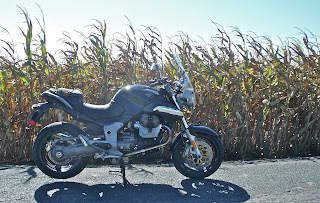Words to live by:
Having been warned in a dream…
…they left for their own country by a different road.
Matthew 2:12 (ISV)
Necessity put me behind the wheel of
the Nissan Frontier rather than a preferred two-wheeled conveyance, but that
didn’t preclude me from enjoying an alternative drive home. Just a month north of winter’s solstice
and in a gap between storms, a low sun and a nice collection of clouds made
this scenic journey very enchanting.
CA 273 amounts to the old divided highway linking Redding to
Cottonwood. Placer Road heads west
through the Clear Creek drainage where the BLM has established numerous
trailheads.
Past Igo, a quick jaunt south on Gas Point Road affords a
visit to the Northern California Veteran’s Cemetery – a tranquil spot to rest.
Also known as A-16, this stretch of pavement isn’t always
smooth but there’s always something of interest around the next bend.
CA 36 from Red Bluff to Fortuna is a
world-class two lane that attracts riders from just about everywhere. The last time I rode it I was choking
on smoke from a wildfire in the Trinities. This day, they rose crystalline and pure, their snowy caps
soothing way must lay beneath.
Along 36, vestiges of the last storm settled
between ridges and, in some places cloaked out the view on the highway. Headlights on.
But just as quickly as you drive into the fog, you descend
out of it. A barn across from the
store in Dinsmore poses in the morning sunlight.
From Bridgeville, one can continue
east through the redwoods along the beautiful Van Duzen River, or as Rider
Magazine Clem Salvadori recently reported, you can travel south on a
little-used Alder Creek Road.
Stopping for a perfunctory picture of a derelict truck, an
area resident slowed waaaayyyy down and then stopped in the middle of the road
as if to say: you ain’t from around
hyere, are ye?
Down the road, another barn caught my eye. I always think about the community
effort that goes into one’s construction of a barn and wonder how long ago that
effort happened for this one.
Around a bend, a sign warns me to slow down and immediately
I find myself in the heart of Blocksberg – a town with few residents and a Zip
Code.
A church, too.
South, I drop into the Eel River’s valley to check out the
town of Fort Seward, but unless that little convenience store I passed is it, I
missed it.
Back on Alder Point Road a curious
concrete structure once did something to the course of a stream now running off
copious amounts of water from yesterday’s storm. Not sure what it was but the circular shape must have been
an outlet for something.
Ten miles on, I passed through the community of Alder Point
without stopping. Usually, there’s
pavement in town possibly turning to dirt on either end. In Alder Point it’s just the opposite. I drop one front wheel into a
water-filled chuckhole that may have been eight feet deep, given how my teeth
reacted.
Closer to Garberville, the road is more civilized making me,
again, wish I’d been on a motorcycle.
A view from the crest of a ridge offered a final shot of the
light playing with the clouds on what turned out to be a glorious alternative
route home.
o0o
Today’s Route: Fill
up before you depart! Redding to Platina: South on CA 273, west on A16
(Placer Road) to CA 36. Platina to
Bridgeville: west on CA 36.
Bridgeville to Garberville: South on Alder Point Road* through Blocksberg and Alder Point (in between those two bergs, consider dropping into the Eel River Valley to check out the
farm land around Fort Seward) then west to Garberville and US
101. *Note: Employ extreme caution
if choosing Alder Point Road on a street oriented bike.
© 2016
Church of the Open Road Press
































